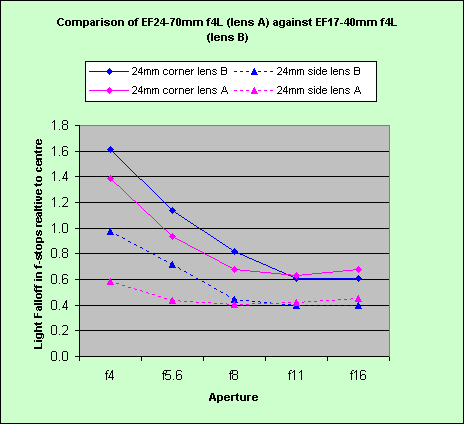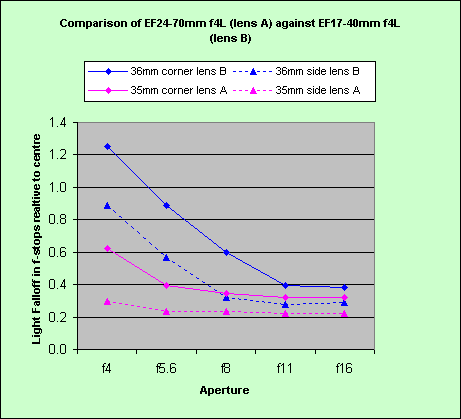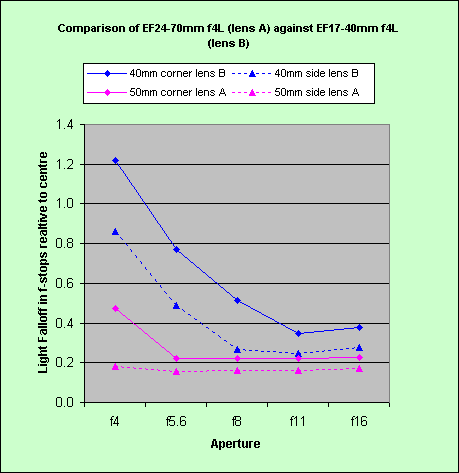
At 24 mm focal length, lens A has better light falloff properties, except above f11.
The graphs below compare the light falloff of the Canon EF24-70mm f2.8L USM lens ("lens A") with that of the Canon EF17-40mm f4L USM lens ("lens B") for those apertures and focal lengths for which the two lenses overlap.

At 24 mm focal length, lens A has better light falloff properties, except above f11.

At 35 mm focal length, lens A always has better light falloff than lens B. And the difference is quite substantial at wide apertures.

At 40 mm focal length, lens A always has better light falloff than lens B. And the difference is quite substantial at wide apertures. (I didn't measure lens A at 40 mm)
It can be seen that the EF17-40mm f4L lens has in nearly all cases worse light falloff than the EF24-70mm f2.8L lens.
Other things being equal, if light falloff is a deciding factor, it would be better to stick with the more versatile 24-70mm zoom and get a 17mm prime lens - except that Canon doesn't make one (although they used to make a 17mm FD lens).
Of course, one can always correct falloff in Photoshop or DxO Optics Pro.
It is important to remember that, in so far as light falloff is caused by the lens, it will be no worse on a digital full-frame camera than it is on a 35 mm film camera.
I have only tested one sample of the EF17-40 f4L lens. Mine might be below par.
Something wrong with this analysis? Let me know!
Peter Facey, Winchester, England
20051123